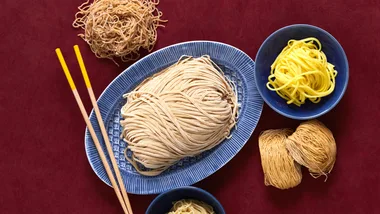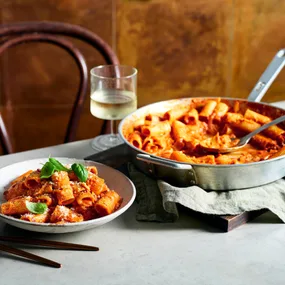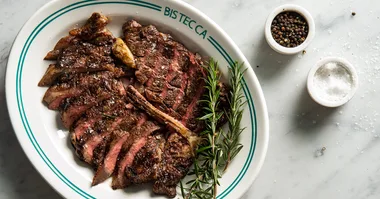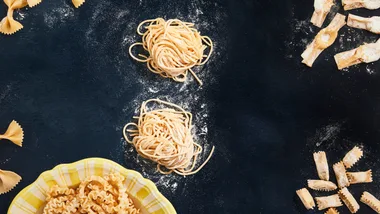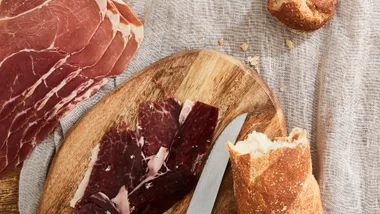Salted caramel only has four ingredients, is simple to make and has many uses. It does, however, require a little care and attention. For starters, there are two ways to make caramel: the wet method, which begins with sugar and water, and the dry method, which uses only sugar.
A wet caramel has its place (it’s great for hard-set toffees, for example), but for a butterscotch-style sauce like this, I prefer dry. The dry method is also easier. There tends to be a fear with caramel that it might crystallise and seize up. Thing is, that only happens with the wet method, and then, only if you stir it; with dry it’s not a concern, you’re just melting and caramelising sugar. I take mine to the edge of burning because I like how the bitterness counteracts the sweetness, but stop yours earlier if you like. Same with the salt, adjust it to suit your own taste.
Tips for making the perfect salted caramel
• Have all the ingredients weighed out and ready to go before you start. Once the sugar begins to caramelise, your attention should be squarely on the pan in front of you. For this caramel sauce it’s 300gm caster sugar, 250gm cream, 50gm chilled diced butter and 1 tsp salt flakes.
• Use a large, deep pan; the caramel will start to bubble and spit once the cream is added and it’s incredibly hot.
• Make sure your butter is cold. This will help prevent the sauce from splitting and ensure the end result is nice and smooth.
• Unless you want a new spatula, use a wooden spoon to stir the sugar – some spatulas can melt into the hot caramel.

**Step 1**
Step 1
Scatter 100gm sugar evenly across the base of a large, deep frying pan. Place over medium-high heat and watch the sugar carefully. Stir it a little to make sure the bottom doesn’t burn before the top has melted and wait until it starts to turn golden (2-3 minutes).

**Step 2**
Step 2
Add another 100gm sugar, stir to melt in and wait until it turns runny (2-3 minutes). Add a final 100gm sugar, stir it in, then continue cooking until the sugar has fully melted and turns dark golden (2-3 minutes). Watch it carefully (the caramel can burn very quickly), cooking until the surface just starts to foam (30 seconds to 1 minute), then turn off the heat.

**Step 3**
Step 3
Carefully pour in 125gm cream. Stir to combine, being careful of the steam and the bubbling caramel, then stir in another 125gm cream. Remove from heat and switch from a wooden spoon to a whisk.

**Step 4**
Step 4
Whisking constantly, gradually add 50gm diced butter, 2-3 cubes at a time, making sure the butter is fully incorporated before adding more (this will ensure the butter emulsifies into the sauce and that the caramel doesn’t split). Whisk in 1 tsp salt flakes, transfer to a heatproof container and cool (wait 30 minutes before tasting; it will still be very hot). Adjust salt to taste and chill until ready to use. If serving as a hot sauce, reheat it in a saucepan over medium heat or in short bursts in a microwave.

**Variations on salted caramel**
Variations on salted caramel
The addition of extra flavours can take this sauce in new directions. When I was at Melbourne’s Stokehouse, for example, I infused the cream with apple peel then served the caramel with a whole baked apple and crème fraîche ice-cream. Try coffee beans or vanilla, too, or even try replacing some of the cream with dark rum or whiskey.
For a thicker sauce, increase the amount of butter by 50gm and reduce the cream by the same amount. This can then be whipped into a buttercream, or used in this salted caramel and chocolate ganache tart by Guillaume Brahimi.


